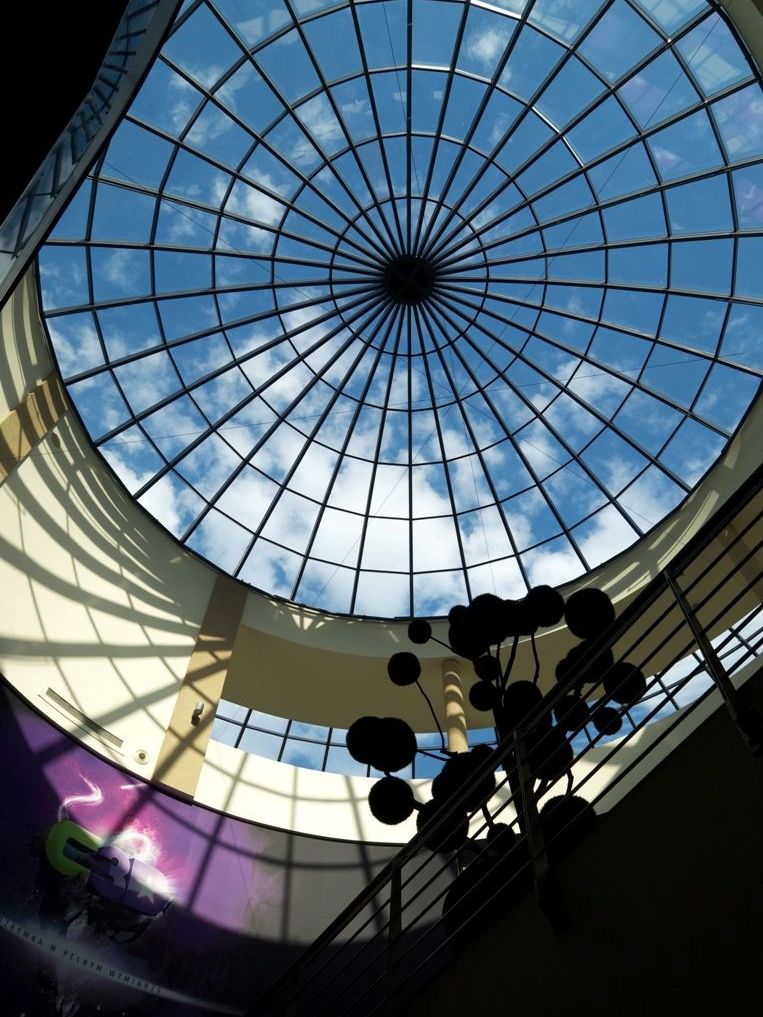Select your windows with environmental protection and energy optimisation in mind
Sky-rocketing prices of energy and gradual, yet imminent, climate changes are forcing building designers and structural engineers to consider the matter of energy consumption in the created spaces to a greater extent than ever before. One of the basic elements of energy demand management is the selection of appropriate windows. What are the solutions to care about the environment and financial resources of investors and future users in the most effective manner?
Large windows, a little trouble
It was believed until recently that large glazing was not a good solution for an excessively warm or an excessively cold climate due to a lack of effective methods of reducing the warming of surfaces under glazing and high heat losses resulting from insufficient thermal insulation of windows.
Today, this problem no longer exists. Quite the contrary: if a building is provided with large glazing, it guarantees effective management of natural energy, and state-of-the-art window and window and door solutions can be used even in passive buildings.
‘The glass façades we design using the MB-104 Passive system with Passive Institute Darmstad certification meet all the requirements set for windows in passive buildings. Their additional advantage over the other systems is that they are made of aluminium and are fully recyclable. We can definitely say that if we fit a building with large glazing based on aluminium profiles, the investor will provide itself with energy optimisation while eliminating issues related to the possible disassembly or disposal of these components’, explains Emmanuel Gregoire, Managing Director at Aluprof Belgium NV.

Vinařství Lahofer, Dobšice, Czech Republic. Systems used: MB-104 Passive, MB-78EI, MB-SR50N.
Optimisation of energy consumption with large glazing – 4 methods
How does properly selected windows and glazing facilitate energy distribution in the building?
Energy recovery with glass façades
According to the findings of the COP26 climate summit, all new buildings and infrastructure should reduce their carbon footprint by 40% by 2030. By 2050, new buildings should have a zero balance of carbon dioxide emissioni. To achieve this goal, it is necessary to find solutions that provide better management of energy consumption throughout the year. Large glazing is one of them. However, it cannot be regular glazing, but the glazing that ensures great illumination and possible warming of the interior with solar energy in the winter and provides high thermal insulation, loss reduction, and, at a time of increasingly frequent storms and strong winds, high strength and water- and airtightness.
One such solution is the MB-104 Passive system that is used to make various outdoor architectural elements, such as windows, doors, display units, or spatial designs. With a thermal partition, the MB-104 Passive can be used in buildings that meet the highest requirements for low energy consumption or passive performance.

Gera Building, Nottingham, Great Britain. Systems used: MB-104 Passive, MB-TT50
Controlled warming of the interior with sunshades
In summer, large glazed surfaces may seem troublesome due to the inflow of excessive solar energy into the interior, which results in room warming. Skilful use of systems of sunshades (Skyroll ZIP or ECO) can reduce this issue. Industrial fabric shades ensure an optical barrier for light and protect against excessive insolation where illumination is necessary and people stay during the day. If required, simply use front-mounted roller shutters that also work well in winter, protecting the interior against heat loss.

Systems used: Skyroll Eco
Roof glazing – modern and light
A fairly interesting solution in terms of energy savings is roof glazing. They are more frequently used in commercial buildings, but they can also be used in residential buildings. They provide outstanding interior illumination during the day and cost savings related to artificial lighting. Similar to windows or glass façades, they can be provided with sunshades to manage warming on hot, sunny days.

Galeria Katowicka, Katowice, Poland. Systems used: MB-78EI, MB-SR50 EI, MB-SR50N EFEKT
Eco-friendly aluminium
Modern and sustainable buildings have to consider the carbon footprint that is generated by the building’s use, construction, retrofit, and demolition. The selection of construction materials and technologies consistent with sustainable development is fundamental to applying for any environmental certificate.
‘We encourage people to use aluminium not only due to its durability and aesthetic effects, but mainly because it is a material that can be recycled virtually endlessly like no other’, emphasises Emmanuel Gregoire. ‘At Aluprof, we mainly use (approximately 65%) recovered aluminium, which allows us to save up to 95% of the energy needed to manufacture raw aluminium. Recycling aluminium also reduces water consumption (up to 97%) and air pollution by 95%. With such robust environmental parameters, some of our products have been awarded Cradle to Cradle certificates that confirm their possible use in building a circular economy, and Aluprof glass façade systems form parts of the buildings that can easily obtain BREEAM or LEED certificates issued for green, sustainable facilities’, explains the expert.
Let’s Build a Better Future
Given the climate changes we face today, responsible engineering design and selection of structural and finishing elements that allow you to optimise energy consumption is the personal responsibility of every architect, developer, and investor. Their selection of windows, glazing systems, or sunshades affects the comfort of future users of their investments. Aware selection pays off.
i According to WorldGBC Advancing Net Zero Status Report
